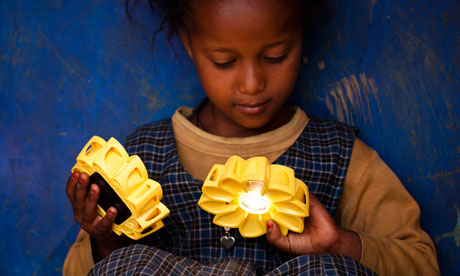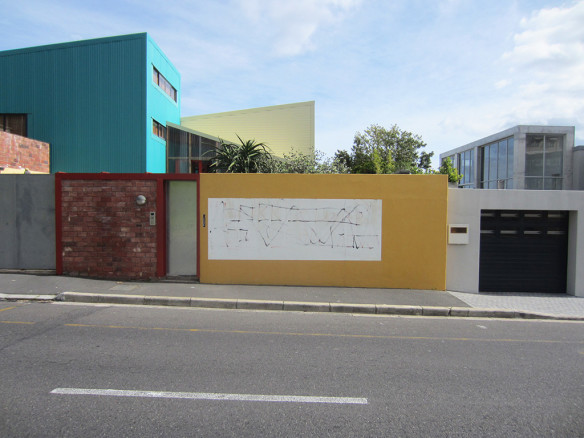The artist Olafur Eliasson, known for his large scale installations, has produced a solar-powered lamp for use in the developing world. Titled Little Sun, Eliasson produced the lamp in collaboration with engineer Frederik Ottesen. It is an example of work by artists, such as Marjetica Potrc, related to design for the developing world – though Eliasson might be fairly unique here in designing an actual mass-produced product for real use.

Little Sun
The project has a high-level art world presence – it will, the Guardian tells us, be used in the surrealism rooms of the Tate Modern in 2012, ‘which will be plunged into darkness after normal opening hours, and visitors invited to visit them by the light of Little Sun lamps’. They will also be for sale in the Tate store.
Explaining why he had developed a social project, the Berlin-based Danish artist said: “Art is always interested in society in all kinds of abstract ways, though this has a very explicit social component. The art world sometimes lives in a closed-off world of art institutions, but I still think there’s a lot of work to show that art can deal with social issues very directly.”
The fact that the lamp – with its cheery petalled face – had been designed by an artist was important, he said. “People want beautiful things in their lives; they want something that they can use with pride … everyone wants something that’s not just about functionality but also spirituality.”
http://www.guardian.co.uk/artanddesign/2012/jul/12/olafur-eliasson-cheap-solar-lamp
Interested too in the mention of Eliasson’s cancelled Olympic project in the same article:
Little Sun, as the lamp is called, has risen out of the ashes of Eliasson’s Cultural Olympiad project, Take a Deep Breath, which the Olympic Lottery Distributor (OLD) declined to fund after details of the proposal were leaked to a newspaper. The project would have asked participants to inhale and exhale on behalf of a cause or idea, and then capture the thought on a “breath bubble” on a website. The “negative publicity” showed that the work was “contentious”, found the OLD’s board, according to its March 2012 minutes, and they “struggled to justify the £1m sought”.





